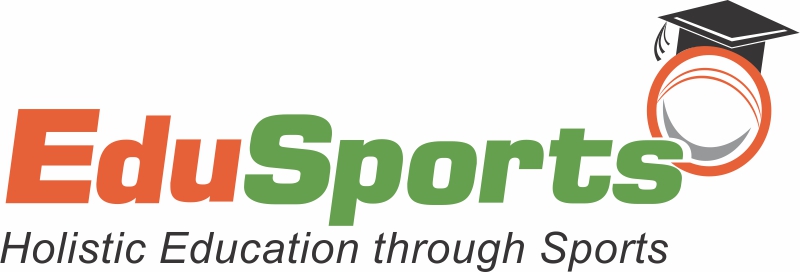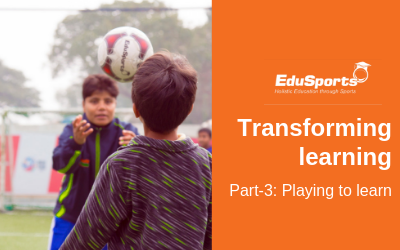“To succeed is to have failed” – learning from failures

Transforming learning: Part-2
Power of Play
(This article is the 2nd in a series on using play to transform learning for children)
I spent part of my childhood in the deserts of Rajasthan. Kite flying is a popular sport in that part of the country – and as kids – the most thrilling part of this sport was to chase kites that were cut loose after duels – catch and bring them back as trophies. While chasing these kites, we would sometimes run for long distances – as the strong desert wind would keep them flying longer. To be able to get to the kite first, the trick was to run fast, with one eye constantly on the kite – and keep discovering the shortest possible route to the line of kite’s flight – which typically included overcoming natural hurdles such as sand dunes, ditches, broken walls of abandoned houses, all manners of nullahs and so on. Most of the times, our attempts to lasso the kites were unsuccessful – but the chase was always worth it.
When I look back at these episodes, as thrilling as they were, they also forced us to take a series of quick decisions to overcome unforeseen obstacles along the way. We would use the best of our cognitive abilities – to problem solve, reason, and discriminate – develop an intuitive sense around our body’s ability to jump, climb, roll, crawl over or around whatever came in the way.
So here’s a question for you: ‘Do you think chasing kites in a desert or any such activity can be qualified as learning for our children? I am not referring here to the feel-good, stress-relieving, life-skills sort of a learning we commonly associate sport or physical activity to – but the learning our schools aim to deliver in their classrooms – which is the core cognitive ability or competence of children.
Before we answer this, let’s take a quick look at what’s happening in our schools currently:
As parents, all of us want our children to succeed in school – chiefly because the success in school is hugely correlated to their material success later in life. And the sure-fire way to succeed in school is to do well primarily in areas of numeracy and language – in other words developing their cognitive ability – measured by metrics such as IQ (Intelligence Quotient).
It does not come as a surprise that the Administrators of schools – both Public or Private – invest in all manners of systems & tools mainly to increase the cognitive competence of children -viz, the learning levels in mathematics, sciences and languages. The investments also include allocation of a very generous share (almost all) of the school timetable for these subjects.
Fundamentally, there is nothing wrong in this approach. But the problem is that survey after survey, every passing year – continues to say that the learning levels in our schools (both public and private) remain below par. At the very least, it merits an evaluation of the current interventions adopted by the state and private bodies to improve learning levels of kids in schools.
The solution is not to replace existing interventions and programs, but overlay (or complement) it with other non-traditional learning tools such as movement or play – which have been long been regarded by Psychologists and Scientists across the globe – as central to the healthy development of children.
Recent Brain research (Hannaford, Smart Moves), conducted by scientists in different parts of the world, conclusively shows that:
1.”Intelligence in humans, measured in form of IQ, depends more on the body than we realize. Learning and thought – including aspects of cognition and creativity – are not just the process of the head but of the whole body.”
2.”Learning involves building of skills, and skills of every manner are built only through movement of muscles – not just the physical skills of athletes, dancers and artists – but also the intellectual skills used in classrooms and work places. It is evident that movement or physical activity – realizes or anchors the thought in the body – and this anchoring is stored in our mind as experience – or what we call as learning.”
Let’s validate this research with the story I started this article with. Could it not be that the seemingly innocuous act of ‘kite chasing’ is actually helping expand the cognitive ability of kids? The act includes the cerebral processes of reasoning and problem solving – getting actualized at once in the mind through movement – and getting stored in our minds as ‘learning’ or ‘experience’.
The fact is that play or movement enables learning via the entire sensory-motor system – and if used judiciously and generously in our education process – can accelerate the learning levels of children exponentially. Our own work and research with kids in the past decade also points in the same direction.
Let’s quickly summarize what we have established (including borrowing the ‘conditions of play‘ from my last article) – and the way forward:
1.Play is a natural impulse in all children (and adults) – which fuels an automatic context of anticipation of ‘pleasure’ – a necessary condition for any learning to happen.
2.Play helps transport kids to an ‘alternate reality’ – a land of ‘make-believe’ (for instance – we used to imagine ourselves to be the ‘Pirates of the Desert’ – in the kite chasing act narrated earlier) – which is essential to assimilate the unintegrated pieces of ‘information’ into their minds as experiences and learnings.
As educators and parents, it is necessary that we let our learning environments be ‘invaded’ with generous sessions of play, movement and games – both structured (to improve the basic motor competence of children) – and unstructured (to let the children use their unconstrained imaginations and co-create ‘play-things’ with their mates for the game at hand) – to significantly increase the capacities of their brains.
One word of caution again, some of us confuse play with organized sports – where adults are in-charge and competition is the goal (an important pursuit but not the focus here). Please refer to ‘attributes of play’ in my previous article for understanding ‘what is play’.
Just to close off the kite chasing story I started this article with – after chasing kites for hours out in the hot sun, when we would return home in the evening – and hear the dreaded voice of our mom – ‘have you found the time to finally study now?’ What fun it would’ve been, if we had been able to just turn around and say, ‘Mom’, ‘what do you think I was doing for the past few hours?’

Author
Parminder Gill
(Co-founder and Head of Business)






